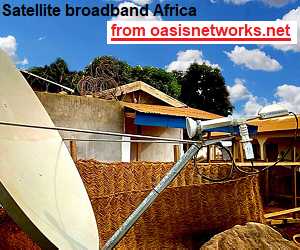How to perform an antenna radiation pattern test?
On receive, look at a strong steady signal from a satellite using spectrum analyser and swing your antenna beam up/down or sideways and plot the resulting pattern.
Hints:
1. Get comfortable with the spectrum analyser, plotter, paper, notebook, antenna controls and az/el readouts all in one place. Have an assistant with hard hat by the antenna to shout stop if anything goes wrong. Make sure transmit is is OFF as you may well point past other satellites.
What are the possible spectrum analyzer settings for this pattern measurement?
Resolution Bandwidth: Get a high C/N if you want to see deep nulls and far out sidelobes. Narrow bandwidths and CW carrier from the satellite will help but you must have stable PLL type LNB. Watch the carrier for 10 minutes or so and familiarise yourself with any frequency drift or satellite movement effects. Wider bandwidths work fine if you have big TV carriers with high enough C/N and only want subreflector adjustment, and no accurate measurements.
Span: You need an analyser with ZERO SPAN option (it stays on one frequency).
Sweep time: Need to set a long enough time for the antenna to move the wanted anount. Could be anything from 30 seconds to 10 minutes. Familiarise yourself with the SINGLE SWEEP function. Start/stop/reset. The bright dot will slowly move sideways across the screen, plotting out the antenna pattern.
Plot function: You need to spend time learning how to plot the patterns on paper. Maybe connect a paper plotter or dump a plot file as data. Add text notes immediately about date/time/what is the plot.
3. Always move the antenna upwards when doing the elevation plots. Always move the antenna from left to right, as viewed from behind the dish, when doing azimuth plots. Reason: So you don't get confused about which way each plot was done.
4. Before getting anywhere near plotting the final narrow and wide patterns for publication you need to mechanically align the subreflector. You will need to plot the main beam and nearest sidelobes many times, possibly over several days. Once you are very experienced you might get the job done in one day.
Read this in full:
Sub reflector alignment What are the important points to consider when analyzing azimuth and elevation radiation patterns?
The az and el patterns should be similar. The main beam beamwidths should be similar.
(If you appear to see two equal main beams, go to the middle and sweep at right angles to find the real satellite beam cntre)
The first sidelobes should be the similar level either side, say 0.5 dB.
There should be nulls between firstand second sidelobes. Talk to the manufacturer about the null between main beam and first sidelobe and criteria for focussing.
The sidelobe patterns should be within the specified masks.
How can I calculate the side lobe level and null?
You need complex antenna modelling software which is beyond the scope of this forum. You can measure side lobe level and null using the spectrum analyser, but beware of non-linearity due to gain compression, particularly if pointed at a high power TV satellite with a large dish.
It is important to determine how much the radiation exceeds the mask (SOMAP, ITU-R S.580, etc.)?
This refers to your transmit radiation pattern. To do this the NOC will to do all the plotting while you move the antenna strictly under their instruction. You have
no hope of acheiving this unless you have spent a week optimising the subreflector and receive antenna patterns. You need to be able to quickly point accurately to centre on the satellite, then offset down, drive up, down to center, offset to the left and drive right across. Make a sheet with all the target angle encoder readout figures.
Hope this helps. Eric


